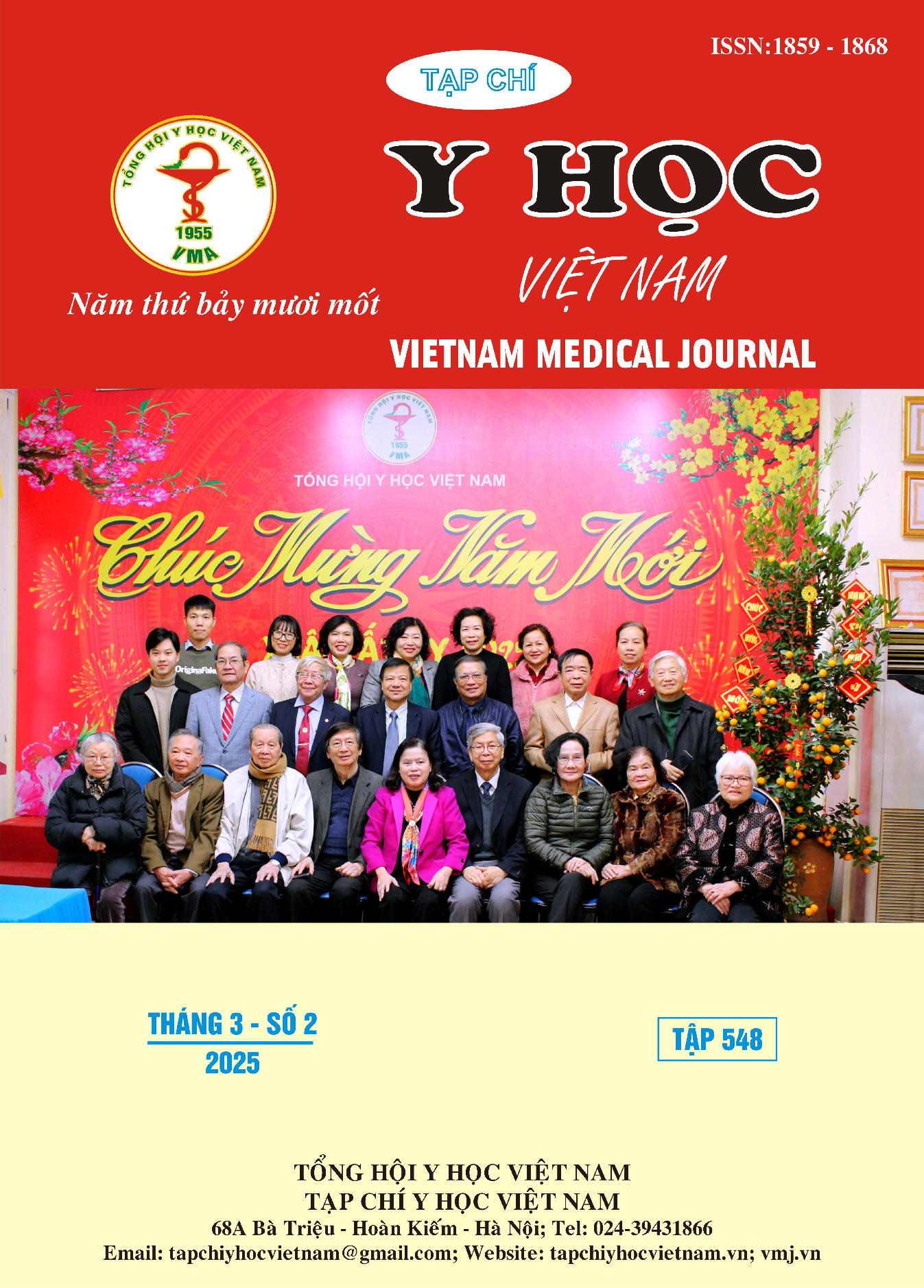EVALUATION OF SEMEN PARAMETER IMPROVEMENT AND RELATED FACTORS FOLLOWING MICROSURGICAL VARICOCELECTOMY AT XANH PON HOSPITAL IN 2024
Main Article Content
Abstract
Objective: This study aimed to evaluate improvements in semen parameters following microsurgical varicocelectomy and to identify related factors in patients treated at Xanh Pon Hospital in 2024. Methods: A descriptive cross-sectional study was conducted on 32 patients with varicocele who underwent microsurgical varicocelectomy at Xanh Pon Hospital. Results: The mean age of patients was 26.3 ± 4.15 years. 9.4% of patients had a BMI below 18, 65.6% had a BMI between 18 and 25, and 25% had a BMI above 25. Varicocele location was predominantly left-sided, observed in 84.4% of cases, with right-sided varicocele in 6.3% and bilateral in 3.1%. Varicocele grading showed that 3.1% of cases were Grade I, 28.1% were Grade II, and 68.8% were Grade III. Postoperatively, semen parameter improvement rates reached 70% at 3 months and 80% at 6 months. Patients with Grade I varicocele had the highest improvement rates, at 80% after 3 months and 90% after 6 months, while those with Grade III varicocele showed the lowest rates of improvement. Patients who underwent surgery promptly upon indication had the most favorable outcomes, with improvement rates of 70% at 3 months and 85% at 6 months. Additionally, patients without testicular atrophy showed higher improvement rates (70% at 3 months and 85% at 6 months) than those with testicular atrophy (40% at 3 months and 60% at 6 months). Lastly, patients under the age of 30 demonstrated the highest rates of improvement in semen parameters. Conclusion: Microsurgical varicocelectomy yielded positive results in improving semen parameters, with improvement rates of 70% at 3 months and 80% at 6 months. Significant recovery in sperm quality was observed following surgery.
Article Details
References
2. Tạ Việt Cường (2015). Đánh giá kết quả vi phẫu thắt tĩnh mạch tinh giãn trên bệnh nhân vô sinh do bất thường tinh dịch đồ tại Bệnh viện Phụ sản Hà Nội. (Đại học Y Hà Nội.
3. Schlegel, P. N. (2017). Severe varicocele and impaired spermatogenesis: Mechanisms and therapeutic options. Human Reproduction Update, 23(2), 165-173.
4. Tunc, O., Bakos, H. W., & Tremellen, K. P. (2018). The impact of varicocele on sperm viability and morphology. Reproductive Biomedicine Online, 36(5), 629-634.
5. Krettek, C., Miclau, T., Green, S., & Wu, J. (2021). Improving male fertility outcomes: Relationship between sperm density and conception rates. Journal of Reproductive Medicine, 66(2), 145-152
6. World Health Organization. (2020). WHO laboratory manual for the examination and processing of human semen(6th ed.). World Health Organization.
7. Kireev, M. V., Ivanov, V. I., & Sergeyev, A. (2019). Age-related differences in tissue regeneration and reproductive function recovery. European Journal of Physiology, 43(4), 241-250.
8. Zitzmann, M., & Nieschlag, E. (2006). The aging male reproductive system and associated fertility issues. Endocrine Reviews, 27(2), 207-232.


